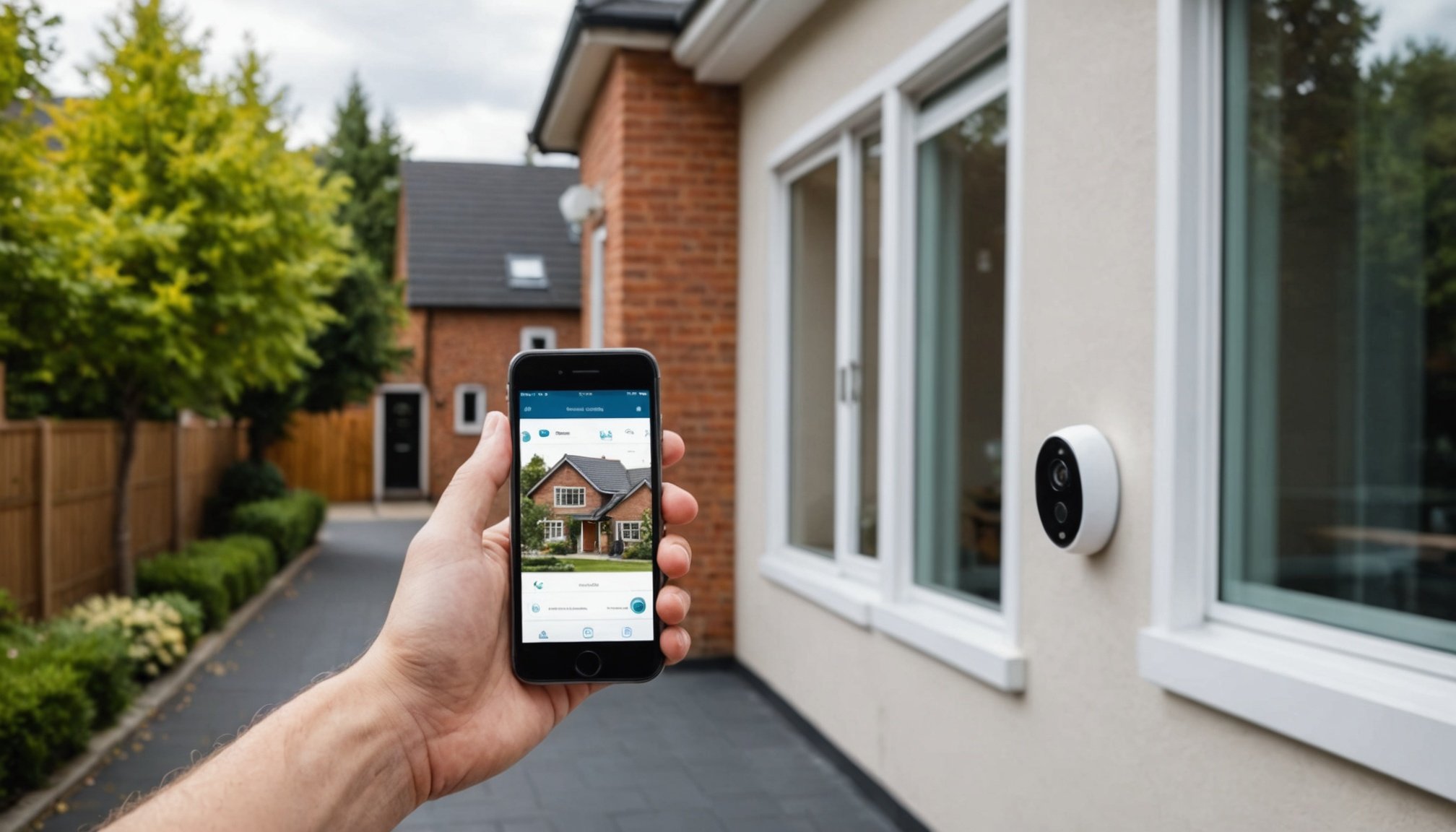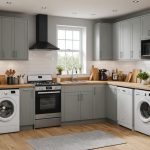Living in an urban apartment can present unique security challenges. An automated home security system enhances your peace of mind, safeguarding your space from potential threats. This guide will walk you through essential steps to set up an effective system tailored to your needs. From selecting the right devices to installation tips, learn how to create a secure and convenient living environment. Embrace technology and elevate your home security today!
Understanding Automated Home Security Systems
In today's fast-paced world, automated home security systems have become an integral part of urban security solutions. These systems are designed to provide homeowners with peace of mind by offering comprehensive protection against potential threats. They typically consist of various components, including motion detectors, surveillance cameras, and alarm systems, all working in tandem to ensure the safety of your home.
A lire également : Creating the Perfect UK Home Office: Tips for a Dual-Purpose Space for Work and Gaming Comfort
The importance of security in urban environments cannot be overstated. With the increasing population density and the rise in crime rates, having a reliable security system is crucial. Automated home security systems offer a proactive approach to safeguarding your property and loved ones, making them an essential investment for urban dwellers.
When choosing an automated home security system, there are several key features to consider:
Dans le meme genre : Transform Your UK Urban Front Lawn: Easy Tips for a Beautiful and Low-Maintenance Garden
- Remote monitoring: This allows you to keep an eye on your property from anywhere using a smartphone or computer.
- Integration with smart home devices: Seamless connectivity with other smart devices enhances the overall functionality of your security system.
- Customisable alerts: Receive notifications tailored to your specific security needs.
By understanding these components and features, you can make an informed decision and select a system that best suits your urban security needs.
Types of Automated Home Security Systems
Understanding the different security system types is essential for making an informed choice. Let's explore the various smart security options available today.
Wired vs. Wireless Systems
Wired systems are traditional, reliable, and often require professional installation. They connect directly to your home's electrical system, providing a stable connection. However, installation can be invasive and costly. On the other hand, wireless systems offer flexibility and are easier to install. They use radio signals to communicate between components, making them ideal for renters or those who prefer DIY solutions. The trade-off is that wireless systems may require regular battery changes and can be susceptible to interference.
DIY vs. Professional Installation
DIY installation is cost-effective and allows for customisation. Many modern systems are designed for easy setup, with user-friendly instructions. This option is perfect for tech-savvy individuals who enjoy hands-on projects. Conversely, professional installation ensures that your system is set up correctly and efficiently. It offers peace of mind, especially for complex setups or those less comfortable with technology.
Integrated Smart Home Security Systems
Integrated systems offer seamless connectivity with other smart devices in your home. They enhance security by allowing you to control and monitor your system through a single app, providing a convenient and comprehensive security solution.
Installation Tips for Urban Apartments
Installing a home security system in an urban apartment requires careful planning. Urban Apartment Security can be challenging due to limited space and rental restrictions, but with the right approach, you can enhance your home's safety effectively.
Preparing Your Space
Before starting the installation, assess your apartment layout. Identify key areas needing surveillance, such as entry points and common areas. An Installation Guide can help you choose appropriate components that fit your space. Ensure you have the necessary tools and check for any building regulations or landlord permissions required for installation.
Common Installation Challenges
Urban apartments often present unique challenges, such as limited space and potential interference from nearby devices. Wireless systems are ideal for apartments, but they may face signal issues. To overcome these, position devices strategically to avoid interference. For rental properties, opt for systems that require minimal drilling or permanent modifications.
Step-by-Step Installation Process
- Plan your layout: Map out where each component will be placed.
- Install sensors and cameras: Follow the Installation Guide for precise placement.
- Connect to power and network: Ensure all devices are powered and connected to your home network.
- Test the system: Verify that all components function correctly and adjust as needed.
By following these steps, you can secure your urban apartment with minimal disruption.
Budget Considerations
When planning for a home security system, understanding the home security budgeting process is crucial. Initial costs often include purchasing equipment like cameras and sensors, as well as potential installation fees. These upfront expenses can vary significantly based on the system's complexity and whether professional installation is chosen.
However, the cost of security systems isn't limited to initial expenses. Long-term savings are an essential consideration. A reliable system can reduce insurance premiums and prevent costly theft or damage, offering financial benefits over time.
In urban areas, several factors influence pricing. High population density may lead to increased demand, affecting system prices. Additionally, urban settings might require more advanced features, such as enhanced surveillance or integration with other smart devices, which can raise costs.
For those seeking budget-friendly systems, consider wireless options with DIY installation to save on setup fees. Look for systems offering essential features without unnecessary extras. Many companies provide tiered packages, allowing you to select only the components you need. By focusing on these aspects, you can effectively manage your home security budget while ensuring comprehensive protection.
Product Recommendations
Choosing the best home security products is crucial for ensuring safety and peace of mind. In the UK, a variety of security devices are available to meet diverse needs and preferences.
Top Rated Home Security Cameras
When selecting a security camera, consider models with high resolution, night vision, and motion detection capabilities. The Arlo Pro 4 and Ring Spotlight Cam are highly recommended. Both offer excellent image quality and robust connectivity. These cameras are widely used in the UK, providing reliable surveillance solutions.
Recommended Alarm Systems
For a dependable alarm system, the Yale Sync Smart Home Alarm and the SimpliSafe Home Security System are top choices. These systems feature easy installation and intuitive controls, making them suitable for any home. They also offer remote monitoring, allowing users to manage security from their smartphones.
Essential Accessories for Enhanced Security
Enhance your security setup with accessories such as smart locks, window sensors, and security lights. Smart locks like the August Smart Lock Pro provide keyless entry and remote access. Window sensors alert you to any unauthorized entry, while security lights deter potential intruders by illuminating dark areas. These accessories are essential for comprehensive protection and are readily available in the UK market.
Integrating with Smart Home Devices
Integrating your security system with smart home technology offers numerous benefits, enhancing both convenience and security. By linking your system to devices like smart locks and lights, you create a cohesive home automation security network that can be controlled from a single interface.
Smart Home Integration allows you to automate responses to security events. For instance, if a motion detector is triggered, your smart lights can automatically illuminate, deterring potential intruders. Similarly, smart locks can be programmed to lock automatically when you leave home, ensuring your property is always secure.
Compatible devices include smart locks, which provide keyless entry and can be managed remotely, and smart lights, which can be scheduled to mimic occupancy when you're away. These devices not only enhance security but also improve energy efficiency by allowing precise control over your home's lighting and access.
To achieve seamless integration, start by choosing security systems that support popular smart home platforms like Alexa or Google Home. Ensure all devices are connected to a robust Wi-Fi network, and regularly update your system's software to maintain security and functionality. This approach will help you create a streamlined and efficient home security ecosystem.
Navigating Urban Security Challenges
Urban environments present unique security challenges that require tailored solutions to ensure safety and peace of mind.
Common Threats in Urban Areas
Urban areas often face higher crime rates, including burglary and vandalism. The density of buildings and population can make it easier for criminals to operate unnoticed. Common threats include break-ins through unsecured entry points and theft of unattended property. Understanding these threats is crucial for developing effective apartment security tips.
Strategies for Enhancing Security
Enhancing urban security requires proactive measures. Installing robust home security systems with surveillance cameras and motion sensors can deter potential intruders. Consider reinforcing doors and windows with additional locks for added protection. Regularly updating your security system and practising vigilance can significantly improve safety.
The Role of Community in Security
A strong community presence can be a powerful deterrent against crime. Neighbourhood watch programs encourage residents to monitor each other's properties, fostering a sense of collective responsibility. Communication with local law enforcement is vital, as it helps build trust and ensures a swift response to incidents. Engaging with your community through meetings and online platforms can enhance overall security awareness and cooperation.
Legal Considerations for Home Security
When installing home security systems in the UK, understanding legal aspects of home security is essential. UK security laws regulate how you can use surveillance equipment, ensuring privacy rights are respected.
Privacy Laws and Security Cameras
Privacy laws in the UK, such as the Data Protection Act, govern the use of security cameras. Homeowners must ensure cameras do not infringe on neighbours' privacy by avoiding coverage of public spaces or neighbouring properties. It's crucial to inform visitors about surveillance through visible signs, maintaining transparency and compliance with these laws.
Permits for Alarm Systems
In some cases, installing an alarm system may require specific permits. While most residential alarms do not need formal approval, systems linked to police response might. It's advisable to check with local authorities to ensure adherence to any permit requirements.
Data Protection Compliance
Compliance with data protection regulations is vital when using smart security systems. This involves securing personal data collected through devices and ensuring it is used appropriately. Homeowners should implement robust security measures, such as encryption and password protection, to safeguard data and maintain compliance. Understanding these legal considerations ensures your home security system is both effective and lawful.
User Testimonials and Case Studies
Exploring home security experiences through real-life testimonials provides valuable insights into the effectiveness of various systems. These user reviews highlight both successes and challenges faced by urban residents.
Success Stories from Urban Residents
Many urban dwellers have shared positive home security experiences. For instance, a resident in London praised their system's remote monitoring feature, which allowed them to capture a potential intruder on camera, leading to a swift police response. Such success stories underscore the importance of choosing a system with robust surveillance capabilities.
Common Issues Faced
Despite the successes, some users report challenges. Common issues include false alarms triggered by pets or weather conditions and connectivity problems in wireless systems. These user reviews emphasise the need for systems with adjustable sensitivity settings and reliable network connections.
Lessons Learned from Real Life Experiences
Through these home security experiences, users have learned valuable lessons. One recurring theme is the importance of regular system maintenance to ensure optimal performance. Additionally, integrating systems with smart home devices can enhance functionality and user satisfaction. By analysing these experiences, potential buyers can make informed decisions, avoiding common pitfalls and maximising their security investment.
Troubleshooting Common Issues
Navigating home security troubleshooting can be daunting, but understanding frequent malfunctions and their solutions is key to maintaining a secure home. Common issues include connectivity problems, false alarms, and malfunctioning sensors. Fixing security problems often starts with checking your system's power supply and ensuring all devices are connected to a stable network. Regularly updating software can prevent many glitches, as updates often include bug fixes and security enhancements.
Frequent System Malfunctions
False alarms are a prevalent issue, often caused by pets or environmental factors. Adjusting the sensitivity settings of motion detectors can mitigate this. Connectivity issues, another common problem, may be resolved by repositioning devices to minimise interference or upgrading your router for better coverage.
Maintenance Tips
Routine maintenance is essential for optimal performance. Regularly clean cameras and sensors to prevent dust accumulation, which can impair functionality. Test your system monthly to ensure all components are working correctly, and replace batteries as needed to avoid unexpected failures.
Additional Support
For persistent issues, consult the manufacturer's support resources or seek professional assistance. Many companies offer online troubleshooting guides and customer service hotlines to help resolve complex problems efficiently.











